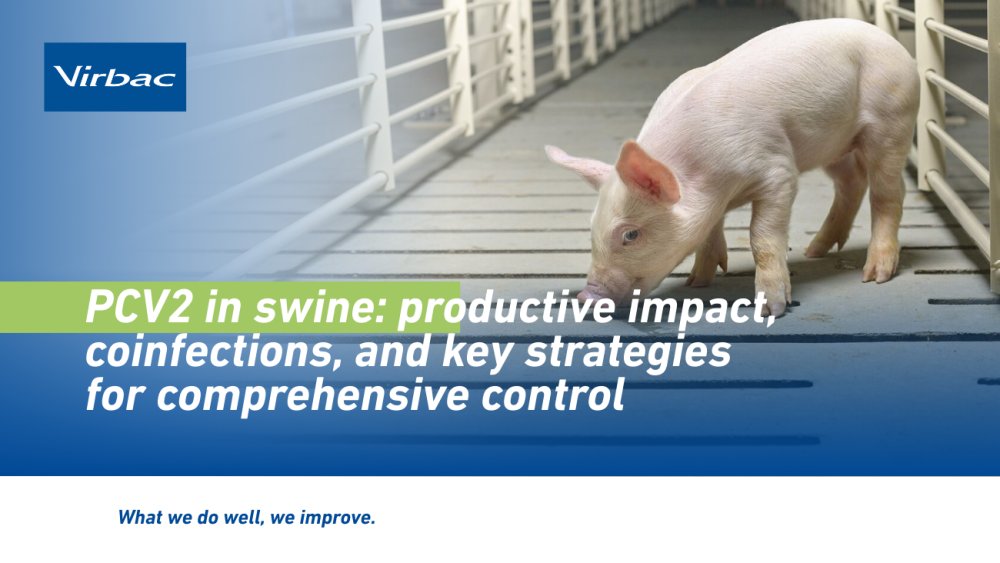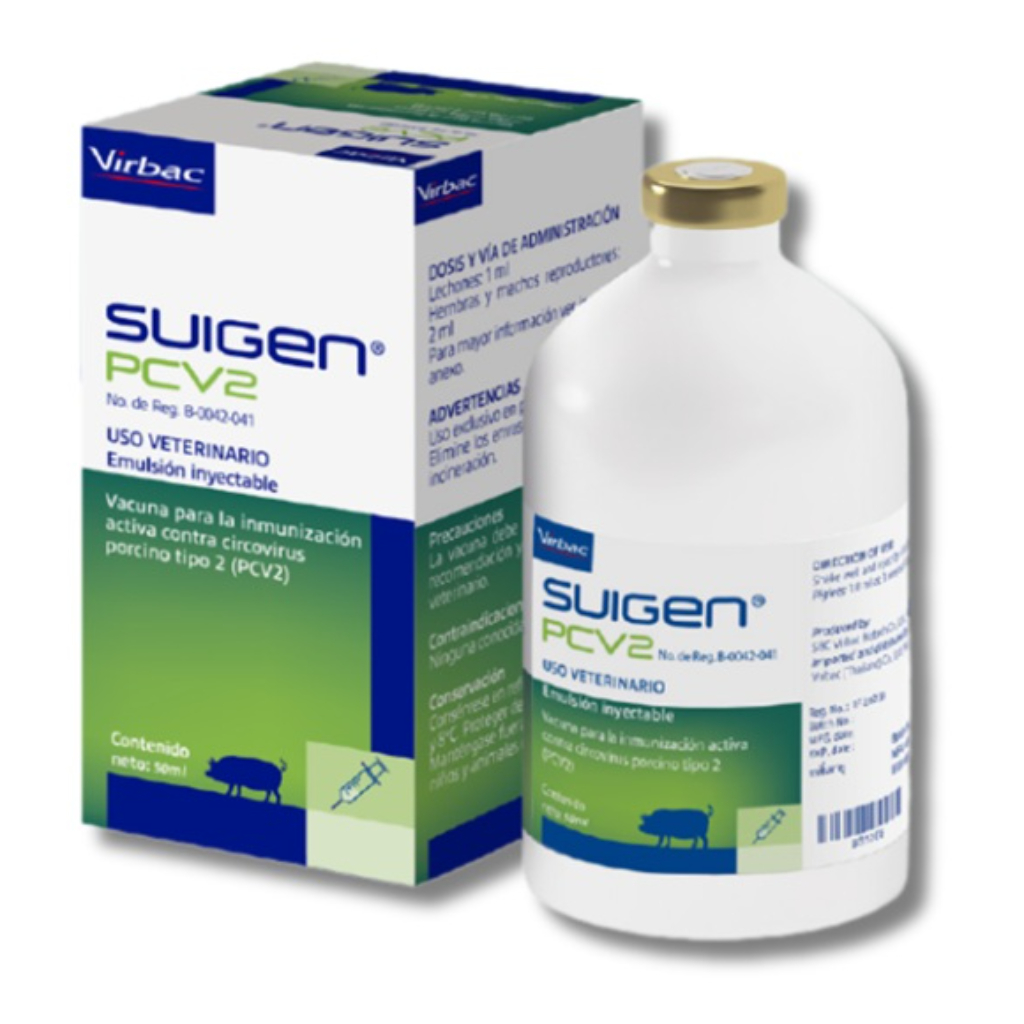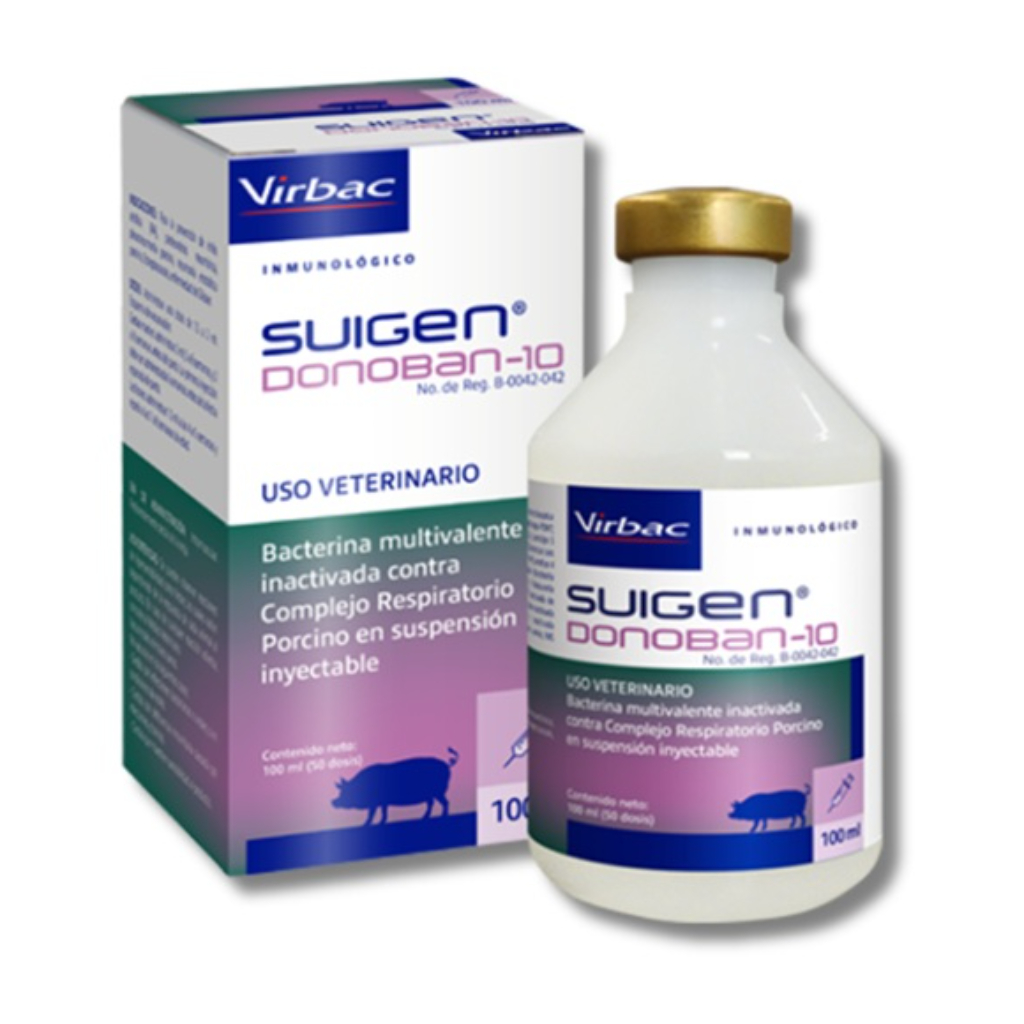PCV2 in swine: productive impact, coinfections, and key strategies for comprehensive control

Porcine circovirus type 2 (PCV2) is one of the most relevant pathogens in the modern swine industry. Far from being a uniform disease, it encompasses a set of clinical syndromes that can appear at different stages of the production cycle and affect various physiological functions of the animal. Under the term “PCV2-associated disease” are included systemic disease (PCV2-SD), subclinical infection (PCV2-SI), reproductive disorders (PCV2-RD), porcine respiratory disease complex (PCV2-PRDC), and, less frequently, post-weaning multisystemic wasting syndrome (PMWS) or porcine dermatitis and nephropathy syndrome (PDNS).
Each of these manifestations can compromise farm performance, either acutely, with evident losses in a short period of time, or chronically, generating productive losses that are difficult to quantify at first glance. The clinical presentation depends on multiple factors, such as the age of the animals, their immune status, the timing of exposure to the virus, and the infection pressure on the farm.
One of the most challenging aspects of PCV2-associated disease is its ability to act synergistically with other pathogens. It rarely appears in isolation: its interaction with viruses such as PRRSV or with bacteria such as Mycoplasma hyopneumoniae enhances the severity of clinical cases, increases systemic inflammation, and significantly reduces productive potential. These coinfections impair the immune response, prolong the duration of infection, and, in many cases, increase viral shedding within the herd.
In subclinical infections, the threat is silent but equally costly. Although animals may not show evident clinical signs, the virus affects feed conversion, delays growth, and reduces final market weight. Studies have shown that even a modest reduction in average daily gain, maintained throughout the cycle, can translate into significant economic losses for production. In addition, subclinical infection creates conditions that allow the virus to continue circulating within the farm, facilitating continuous exposure of animals and hindering control strategies.
The genetic diversity of PCV2 and its capacity for rapid evolution add complexity to its control, as the virus shows mutation rates comparable to many RNA viruses, which allows the emergence of variants with adaptive advantages. Currently, the PCV2d genotype has become established as the predominant one in most parts of the world, displacing the historical genotypes (a and b) and being associated with cases of higher virulence. This genotypic evolution has direct implications for disease control, since differences in the capsid sequence may influence the effectiveness of the immune response.
Summary
- PCV2 is not a single disease but a set of syndromes (PCV2-SD, PCV2-SI, PCV2-RD, PCV2-PRDC, PMWS, PDNS) that can affect different stages of the production cycle and be susceptible to coinfections.
- Direct and indirect productive impact ranging from acute losses to silent reductions affecting feed conversion, average daily gain, and final market weight.
- Comprehensive control required, including health management, stress control, management of coinfections, and vaccination adapted to the epidemiological context.
References
- Opriessnig T., et al. (2011). Porcine circovirus type 2: current status of knowledge. Vet. Microbiol.
- Segalés J. (2015). Best practice and future challenges for vaccination against porcine circovirus type 2. Vet. Microbiol.
- Saade G., et al. (2020). Coinfections and their impact on pig health. Porc. Health Manag.
- D’Annunzio R., et al. (2023). PCV2d in Latin American swine populations. Transbound. Emerg. Dis.
Contact:
Contact us using the following form.




